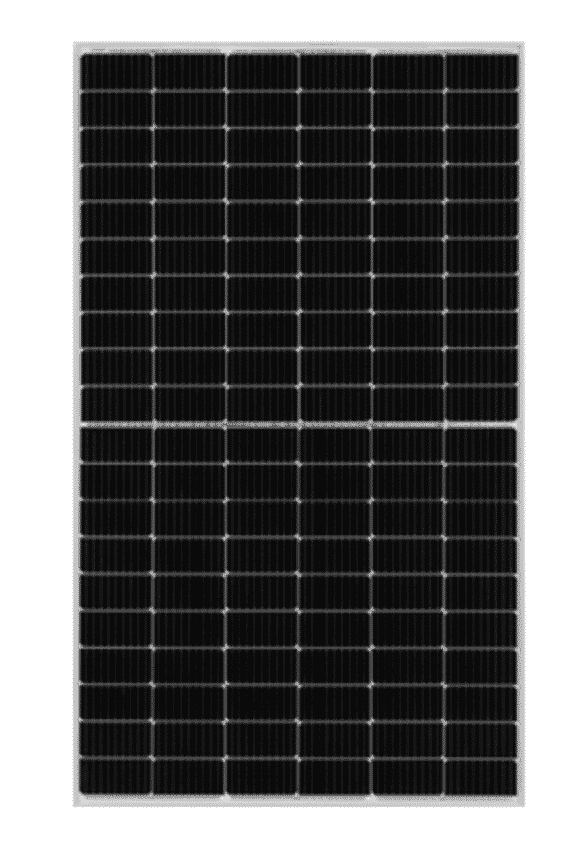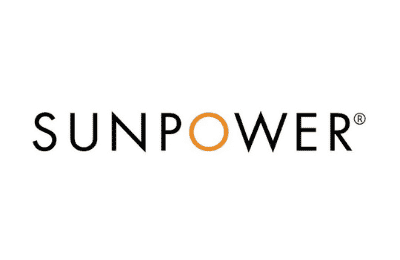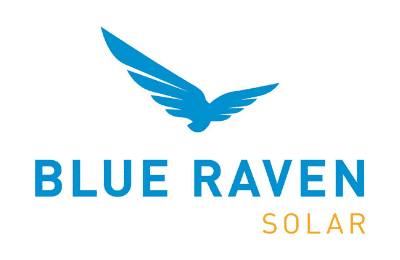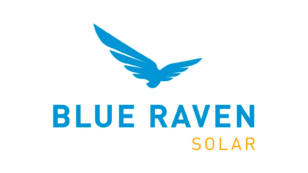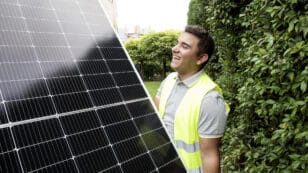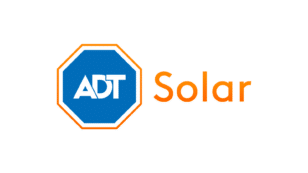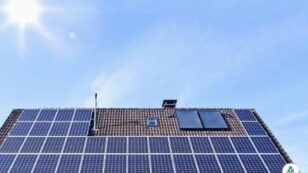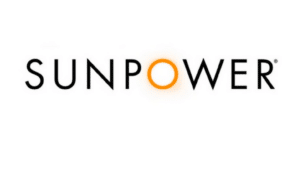
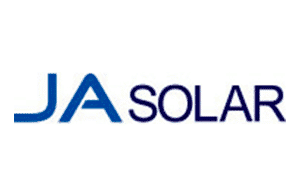
JA Solar Panels Review (2024 Cost, Efficiency & Performance)
Here’s what you need to know about JA Solar:
- EcoWatch Rating: 4.5/5 Stars
- Efficiency: 20.1% to 21.2%
- Power Rating: 350 to 395 W
- Warranty Length: 12 to 30 Years
Each product and or company featured here has been independently selected by the writer. You can learn more about our review methodology here. If you make a purchase using the links included, we may earn commission.
JA Solar Holdings is based in Shanghai, China, and it manufactures solar panels and a variety of solar-related materials for residential and commercial applications. JA Solar is considered a budget brand, but among the different affordable panel manufacturers, JA Solar delivers relatively high quality and high efficiency ratings for boosted performance and savings.
In this guide, we’ll be taking a look at JA Solar’s panels, including their overall durability and quality, the efficiency they provide and how good they are for home solar systems in general. We’ll also compare them to other top brands to help you decide if JA Solar is the best option for your home.

JA Solar

Average cost
Pros
- Great warranty coverage
- Excellent efficiency
- Excellent value for price
Cons
- Slightly limited options
- Not as powerful as biggest competitors
Does JA Solar Make Good Solar Panels?
Overall, JA Solar makes great panels for homeowners on a budget. The price per watt is considerably lower than you’d find from most other manufacturers, but among other affordable brands, the efficiency rating and performance specifications are above-average. For the cost, JA panels deliver outstanding value.
With that being said, we more commonly recommend higher-quality, higher-efficiency brands, like REC, Maxeon from SunPower, Trina and QCells. These other brands usually have superior warranty coverage and better durability, so they will save you more in energy costs in the long run in many cases.
In the following sections, we’ll take a look at each solar panel option JA Solar manufactures and explain which we recommend for different applications. The company manufactures two lines of panels — DeepBlue 3.0 and DeepBlue 4.0x — and we’ll discuss the individual products within each line below.
JA Solar DeepBlue 3.0 Solar Panels
The DeepBlue 3.0 product line from JA Solar is the more affordable of the two, meaning it’s the best option if you’re looking to keep your installation prices as low as possible. This line of products includes three distinctive subcategories: DeepBlue 3.0 Light, DeepBlue 3.0 and DeepBlue 3.0 Pro.
DeepBlue 3.0 Light
The DeepBlue 3.0 Light line of panels from JA Solar are the smallest panels of the bunch and have the lowest wattage per panel, coming in between 380 and 415 watts. Generally speaking, JA Solar panels are larger than the average panels available from other manufacturers, but this product line is in line with the average.
These panels only come with a 12-year product warranty and a 25-year production warranty.
- JAM54S31 MR: These panels are the smallest ones available from JA Solar. They have an output of between 380 and 405 watts and maximum efficiency ratings of between 19.5% and 20.7%. These panels are all black and don’t have any visible grid lines, making them quite visually appealing.
- JAM54S30 MR: These panels are slightly larger than the previous entry, coming in at between 390 and 415 watts each. They have higher efficiency ratings between 20.0% and 21.3%, making them better options if you’re looking to maximize your power production. On average, these will produce more power than the other model in this product line.
DeepBlue 3.0
The DeepBlue 3.0 panel lineup is meant for homeowners who aren’t necessarily looking to keep costs as low as possible and instead want to ensure their system performs better and produces more energy.
Overall, we’d recommend this line of panels over the 3.0 Light panels, as higher efficiency ratings and power outputs mean you might be able to get away with fewer panels on your roof. Additionally, higher-efficiency panels mean more production, which could mean greater energy savings over the life of your system.
Like the 3.0 Light line of panels, these also only come with a 12-year product warranty, which is well below the industry standard. However, the production warranty is still quite good, as it lasts for 25 to 30 years, depending on the specific model you have installed.
- JAM78S30 MR: These panels are significantly larger than the ones in the previous model line. They come in at between 580 and 605 watts, making them significantly larger than most residential solar panels. They reach up to 21.6% efficiency, putting them well above average.
- JAM78D30 MB: These are more or less identical to the previous entry in the series, but they are bifacial panels, so they will often produce more energy overall. These are similarly sized at between 580 and 605 watts, and they have identical efficiency ratings. They have a production warranty that lasts for 25 years.
- JAM72S30 MR: These are slightly smaller than the previous options at between 530 and 555 watts. As such, they could be better suited for smaller roofs. They do have slightly lower efficiency ratings, though, coming in at between 20.5% and 21.5%. These panels also have a 25-year efficiency warranty.
- JAM72D30 MB: These panels are bifacial, so they can recapture sunlight that might otherwise be lost through the rear of the panel. These have the opportunity to maximize your production, although the efficiency rating is a bit lower than the others at between 20.3% and 21.3%. These are also smaller than the other options in the series at between 525 and 550 watts. Finally, these have the best efficiency warranty of the bunch, as the production is covered for 30 years rather than 25.
DeepBlue 3.0 Pro
As you might imagine, the DeepBlue 3.0 Pro series is the highest-performing one in the 3.0 product lineup. They have the highest efficiency ratings, come with the largest wattages and usually boast a 30-year production warranty. However, these still only come with a 12-year equipment warranty.
- JAM78D30 GB: These are bifacial, mono PERC half-cell modules, which have a higher efficiency capacity than traditional monocrystalline solar panels. They’re available in outputs ranging from 585 to 610 watts, so they’re considerably larger and more powerful than most other panels. They have above-average efficiency ratings ranging from 20.9% to 21.8%.
- JAM54D30 GB: These panels are nearly identical to the previous option, but they’re significantly smaller, with power outputs ranging from 400 to 425 watts. These are in line with standard panel sizes and have efficiency ratings between 20.5% and 21.8%. They are also bifacial, so they make the most of their smaller size.
- JAM54S31 GR: These are the smallest panel options available in the Pro series at between 395 and 420 watts. These are not bifacial, and they have slightly lower efficiency ratings of between 20.2% and 21.5%. It should be noted that these only come with a 25-year production warranty.
- JAM54S30 GR: These panels range from 400 to 425 watts, so they’re one of the smaller options within this product line. They are also not bifacial, but they have higher efficiency ratings than the JAM54S31 option, ranging from 20.5% to 21.8%. These are made with gapless ribbon technology — we’ll explain this in greater detail below — to improve durability, but they still only come with a 12-year product warranty and a 25-year production guarantee.
- JAM72D30 GB: These panels are quite large at between 540 and 565 watts. They are bifacial, so they can recapture some of the sunlight that would normally be lost through the back of the panel to produce more usable electricity for your home. They are PERCIUM solar cell panels and feature gapless ribbon technology, and they have some of the highest efficiency ratings offered by JA Solar’s 3.0 series: 20.9% to 21.9%.
- JAM78S30 GR: These panels are all-black and have no visible grid lines, which most solar customers prefer for aesthetic reasons. They’re available in sizes ranging from 585 to 610 watts, and they have a high performance with efficiency ratings of up to 21.8%. These come with a less appealing power output warranty than most others in this product line at 25 years.
- JAM72S30 GR: These panels are slightly smaller than the previous entry at between 540 and 565 watts. They are also all black and have no visible grid lines, so they look very sleek. They match the efficiency rating of the JAM72D30 GB panels, tying for the highest available in the 3.0 series. However, these panels only come with a 25-year production guarantee.
JA Solar DeepBlue 4.0x Solar Panels
The DeepBlue 4.0x line of panels from JA Solar boasts higher efficiency ratings than the 3.0 series, and they also all come with the superior 30-year production warranty, which is longer than the coverage for many of the 3.0 panels.
The 4.0 series is going to be a better option overall if you’re looking for maximized efficiency and energy savings, although they do come at a higher price per watt, on average.
We’ll include some information about the DeepBlue 4.0x products below.
- JAM54D41 GB: These panels are considered the ideal size for home solar panels at between 400 and 425 watts. They’re all black and have no visible grid lines, making them one of the most popular panel options from JA Solar overall. However, the efficiency rating is less impressive than the other options within this product line at between 20.5% and 21.8%. These are bifacial panels, though, so you should see improved energy production over panels with a similar efficiency that aren’t bifacial.
- JAM54D40 GB: This is the second-smallest panel option in the 4.0 series, ranging from 410 to 435 watts. These are black, bifacial panels as well, but they have visible grid lines, so they’re generally considered less visually appealing. However, they do have higher efficiency ratings ranging from 21.0% to 22.3%, making them the third-most efficient model from JA Solar.
- JAM78D40 MB: These are bifacial, double-glass panels with efficiency ratings ranging from 21.5% to the company’s second-highest efficiency of 22.4%. These will deliver outstanding energy production and are a great option for solar customers looking to get the most energy per panel for their homes. These are also the largest panel option in the series, ranging from 600 to 625 watts.
- JAM72D40 MB: These panels are similar to the previous option in that they are black, have visible grid lines and are bifacial to help maximize production. They have the highest efficiency rating available from JA Solar of 22.5%, although the smaller options have efficiency ratings of 21.5%. These panels come in sizes from 555 to 580 watts, making them larger than most residential photovoltaic (PV) panels.
- JAM72D40 GB: If you’re looking for maximum efficiency and want all-black panels with no unsightly grid lines, this is the panel for you. With sizes between 555 and 580 watts, these bifacial panels have efficiency ratings starting at 21.5% and hitting JA Solar’s maximum efficiency of 22.5%. These are considered one of the most appealing options from JA and are one of the most efficient panels in the entire solar industry.
What Technology Does JA Solar Use In Its Solar Panels?
JA Solar uses mostly monocrystalline solar panels and half-cut cells, which are more durable, reliable and efficient than polycrystalline (poly) solar panels. Most models also include multi busbars (MBB) to reduce the risk of hotspots and improve overall performance. These are common in many brands, though.
There isn’t much in the way of proprietary clean energy or solar cell technology used in JA Solar panels other than its polycrystalline PERC cells or PERCIUM cells, but it does use a variety of technological advancements to push the performance of its products.
We’ll discuss some of the renewable energy technology JA commonly uses in its solar modules in the following sections.
PERCIUM cells
PERCIUM cells were created by JA Solar; as per the company, they are the first poly cells to surpass the 20% efficiency rating mark, which is pretty impressive.
Polycrystalline cells are made by compressing shards of silicone together rather than cutting the cell from a single silicon wafer, as you’d see in monocrystalline solar cells. Mono PERC cells come with a higher average efficiency rating and superior durability, so they’re generally preferred for home solar systems.
However, the PERCIUM cells keep manufacturing costs low — one of the benefits of poly panels — but help maximize the efficiency rating. The durability is still lower than mono cells — hence the 12-year equipment warranty from JA — but the efficiency is comparable. That means lower installation costs and similar energy savings over time.
Gapless Ribbon Technology
Gapless ribbon technology is tech used by many solar companies. It involves using connective ribbons to string solar cells together so that they overlap on the edges. This eliminates wasted space as compared to when the non-conductive edges of cells are normally soldered together.
Gapless tech also generally improves panel durability since the soldering isn’t rigid. The flexibility of the ribbon allows for some movement before the connection is lost, leading to fewer issues with solar cells failing to produce and a lower risk of losing out on solar savings.
Bifacial Solar Panels
Many of JA Solar’s panels are bifacial, meaning both the top and the bottom can collect sunlight to convert to energy. This helps boost the overall production of the panel because some of the solar energy that would normally escape out the back of the panel can be recaptured by the second face.
Bifacial solar panels may not have a higher efficiency rating than single-face panels, but they tend to collect more power for your home, making them a great option for residential use. Ultimately, that can translate to needing fewer panels on your roof and saving more money over time.
How Do JA Solar Panels Perform in Different Climates?
JA Solar panels have temperature coefficients that fall between -0.3% and -0.35%. The temperature coefficient of a panel tells you how much of the starting efficiency the panel loses per degree above 25 degrees (C) or 77 degrees (F). The lower the temperature coefficient, the more efficiency your panels will maintain as the temperature goes up.
The average temperature coefficient for tier-one solar panels is -0.35%. That means all JA panels are either average or above average in terms of efficiency loss in warmer temperatures.
Since JA panels also have above-average efficiency ratings to begin with, that means they will not only outperform most competitors at lower temperatures but also maintain more of their efficiency as they get hotter.
This makes them a great option in just about any climate, although you might want to choose a panel with a temperature coefficient that’s well below average — like Maxeon and Panasonic panels — if you live in a very hot climate.
Does JA Solar Make Any Other Solar Products?
Aside from the many solar modules mentioned above, JA Solar also manufactures individual components for PV module production, as well as battery storage systems. We’ll include some information about each of these products in the following sections.
Junction Boxes
Junction boxes are typically affixed to the rear of solar panels and house the electrical wiring that connects your panels together in series. The junction boxes also serve to connect your system as a whole to your home’s electrical box.
Most solar panels use rear-mounted junction boxes, and JA manufactures its own boxes and provides them to other manufacturers.
Solar Panel Frames
JA Solar makes the aluminum frames that are used to mount your solar panels to your roof and provide a rigid foundation for stability and panel durability. It’s unclear if JA manufactures aluminum frames for other panel manufacturers.
Other Solar Manufacturing Materials
JA Solar also produces a handful of other PV manufacturing materials, including crystal furnaces for producing silicon crystals, graphites for treating silicon crystals, stencils for producing solar panel electrodes, PV paste, ethylene vinyl acetate (EVA) film, and other products used in the production of solar panels.
JA Solar Batteries
JA Solar makes its own solar batteries. One of the more well-known battery options it offers is for residential use, simply called the JA Energy Storage System. This works seamlessly with your panels to provide off-grid power for your home in the event of a power outage. It can also provide you with effective net metering to help boost solar savings. There are three different types of home solar batteries available, based on your needs.
Unlike many other solar battery manufacturers, JA also produces utility-scale batteries for commercial and industrial use, including a massive backup battery designed for power plants.
How Much Do JA Solar Panels Cost?
It’s difficult to say with certainty how much JA panels for your home will cost for a few reasons. First, every solar array is different. System size, home size, monthly energy consumption, shading on your roof and more all need to be considered to determine what your panels will cost. Plus, cost information can vary by region and installer.
With that being said, though, JA Solar panels are more affordable than many direct competitors, usually coming in at around $3.37 per watt. The national average price for solar panels is around $3.33 per watt, but panel brands that compete with JA Solar — those with similar efficiency ratings, like REC, LONGi, Trina Solar and Canadian Solar — are usually closer to $3.67 per watt.
To put that into perspective, the average solar array in America is 9 kilowatts (kW). For a panel brand that came in at $3.67 per watt, you could expect to pay about $33,030 before any incentives. For the same size system but with JA panels, you might pay closer to $30,000, around $3,000 less.
JA Solar Financing Options
JA Solar is a manufacturer only, and it doesn’t have an installation team that can install your system for you. This is the norm in the solar industry, although there are exceptions, like Maxeon/SunPower.
As such, your financing options for JA Solar panels will vary based on the solar panel installation company you choose. Many companies only accept cash purchases and solar loans, while others also entertain more accessible solar leases and power purchase agreements (PPAs).
We recommend a cash purchase if at all possible. This demands the entire system price paid upfront, but it also gives you instant ownership of your panels, which means the shortest possible panel payback period and the highest solar savings in the long run. Loans are slightly less beneficial because of the interest you’ll have to pay, but they’re our next most recommended option.
Thankfully, cash purchases are more accessible with JA panels than most other brands, as they tend to be more affordable.
Solar leases and PPAs don’t lead to panel ownership, so they don’t let you take the federal investment tax credit (ITC). They also yield minimal savings in the long run and could complicate the sale of your home.
How Can You Save Money on JASolar Panels?
Although panels manufactured by JA Solar are more affordable than modules from many competitors, most customers still look for ways to save money when purchasing them. There are a few things you can do to help keep costs down, which we’ll discuss in the following sections.
Take Advantage of Solar Incentives
One of the best solar panel savings strategies is to take as many solar incentives and rebate programs as possible. All U.S. residents have access to the federal tax credit, which is a credit to your income taxes for 30% of your system total. On average, this carries a potential value of over $8,991.
Many states, municipalities and utility companies offer local incentives as well, including tax credits, solar rebates and more. We recommend you speak with your solar panel installer and check the Database of State Incentives for Renewables and Efficiency (DSIRE) for more information on what’s available in your area. Most residents can save thousands by taking federal, state and local incentives.
Pay In Cash If Possible
Paying for your system in cash is easier when you go with JA panels than it is with many other tier-one brands because of the lower cost per watt. Paying in cash is also highly beneficial in the long run, even though it means a higher cost upfront.
Cash payments lead to immediate panel ownership, so you won’t pay any interest for your system. The average system paid for in cash pays itself off in energy savings in 11 years and then saves an additional $31,513, on average, over the remaining panel lifespan.
That’s around $5,000 more that you’ll save than if you paid with a solar loan and around $25,000 more than you’d save over time if you went with a lease or a PPA.
Get Multiple Solar Quotes
Finally, we recommend you get a few different quotes for your system. Every solar installer charges different prices for labor and administrative fees, and some upcharge JA panels more than others. Getting a few different quotes for your solar project can help you get the best price possible for the system you need, sometimes saving thousands of dollars.
Does JA Offer a Good Solar Panel Warranty?
As mentioned above, JA PV panels are more affordable than many competitive panel options, but they lack the reliability and durability that you’d find in more expensive brands.
All JA panels come with a 12-year equipment warranty, which is less than half of the industry average of 25 years. Most of JA’s direct competitors — like REC, Trina, QCells, Jinko Solar and Canadian Solar — come with a full 25-year warranty for the equipment and manufacturer defects.
Ultimately, you’ll get more life out of other tier-one brands, so while JA panels are affordable upfront, they could end up costing you money in the long run if you run into issues after the 12-year warranty is up.
JA panels also come with either a 25-year or a 30-year production guarantee. Some models, like the JAM54S31 MR panel in the DeepBlue 3.0 Light product line, have a 25-year warranty that guarantees no more than 0.55% efficiency degradation per year. That leaves you with a below-average 86.25% efficiency at the end of the warranty period.
Some of the Pro panels in the DeepBlue 3.0 lineup have lower annual degradation of 0.45%.
The DeepBlue 4.0x JAM54D41 GB panels have one of the best solar panel performance warranties, guaranteeing no more than a 1% dip in efficiency in the first year, followed by a maximum of 0.4% per year thereafter.
For comparison, the industry average is 2.5% in the first year and 0.4% annually thereafter, leaving you with a total efficiency loss of 12.1%. Maxeon panels have one of the slowest degradation rates in the industry and guarantee 92% of the starting efficiency after 25 years.
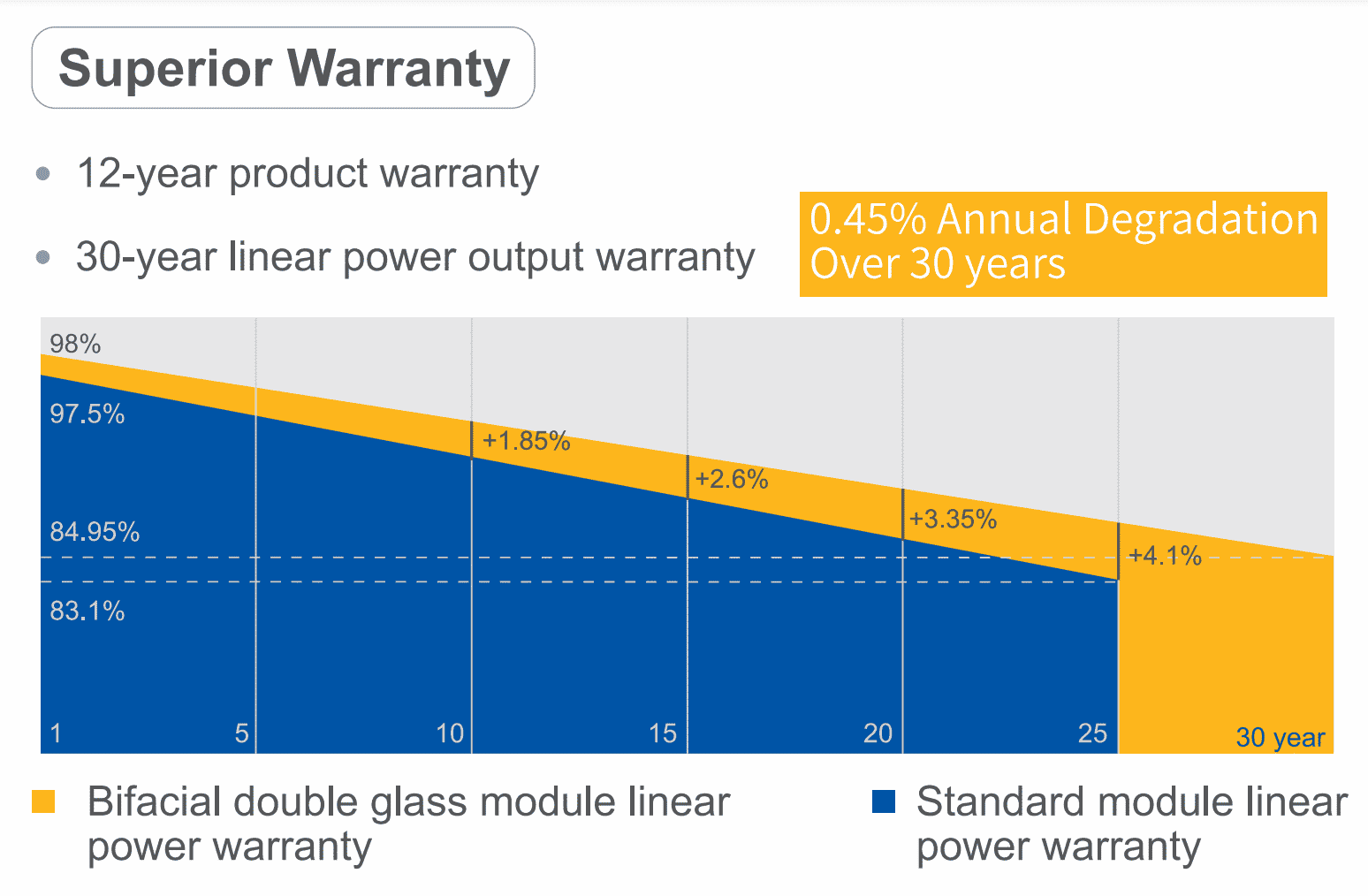
How to Get JA Solar Panels Installed
As we discussed above, JA Solar is not an installer and only manufactures PV equipment. As such, you’ll need to choose a solar panel installer that carries JA panels and work with the provider to have your system installed. Most of the larger national companies do not install JA panels, so you’re best off contacting local installers to see if they carry them.
Below, we’ll include the steps you’ll need to follow to have a solar array installed using JA solar modules.
- Step 1 — Request a quote: First, you’ll need to find a local company that carries JA panels and request a quote for your home. You might need to provide a recent energy bill and information about your energy consumption habits at this stage.
- Step 2 — Consultation and property inspection: Next, your installer should inspect your home in person to gauge the condition of your roof, take measurements and figure out how many panels you’ll need based on sunlight availability, shade conditions and more. You’ll receive a formal estimate for your system.
- Step 3 — Contract approval: Once you approve the proposal, you’ll sign your contract, and work will begin on your solar project.
- Step 4 — Permitting and planning: The administrative team at your installation company will begin pulling building permits for the system and ordering components, if necessary. This part of the process can take weeks or even months, depending on several factors.
- Step 5 — Installation: Next, your installer will schedule you for the installation. The installation team will likely arrive early on the installation day and should finish the process within a day or two. You should plan on being home all day, as the technicians will need access to your home periodically.
- Step 6 — Inspections and interconnection: After the system is set up, your installer will need to schedule an inspection with your utility company to confirm that everything is connected safely and the system can be activated. This will also give you access to net metering, which helps maximize your savings over time. Your installer will also schedule final inspections to close out your building permits.
- Step 7 — Solar monitoring: After the installation and formal system activation, you’ll be responsible for making sure your panels continue producing as expected. Your installer might provide access to a solar monitoring app, depending on the other equipment you have installed. Components like Enphase inverters and Tesla Powerwalls usually give you access to solar monitoring software.
Since JA Solar PV panels are usually installed by local installation companies rather than national ones, you can use the tool below to get estimates from local companies that carry and install JA panels and comparable brands.
What Are Customers Saying About JA Solar Panels?
Most of the reviews online regarding solar services are for installers, so it’s difficult to parse which comments refer to the reliability or quality of individual panels as opposed to the company that installs them.
With that being said, we have read through dozens of reviews to get a sense of the overall performance of JA panels and the customer sentiment toward their quality. Generally speaking, customers are pleased with the power production they see from JA panels, although there are some concerns regarding panel durability and longevity.
Positive Reviews of JA Solar Panels
The reviews for JA panels are generally pretty positive, with customers specifically mentioning that the solar production was equal to or better than what they expected. This is unsurprising, seeing as JA panels have above-average efficiency ratings.
Additionally, customers comment regularly on the overall quality for the money. JA panels are more affordable than many competing brands but deliver similar efficiency ratings. The solar savings most customers see — especially shortly after installation — are outstanding based on the cost of the systems.
The positive aspects mentioned in reviews show up about as often as they do in other brand reviews, although more customers comment positively about the price than they would for other panel options.
Negative Reviews of JA Solar Panels
There are some negative reviews regarding JA panels as well, which, unfortunately, mention that the longevity of the panels isn’t ideal. JA panels come with a 12-year equipment warranty, and some of the panel models are polycrystalline panels, which usually means less appealing durability.
Some customers have run into issues with panels failing sooner than other brands would be expected to. It’s important to remember that the installation company also plays a role in proper panel functionality.
JA Solar vs Other Solar Panel Manufacturers
JA Solar is one of the best budget brands, but it is far from the most durable and reliable option. If you’re looking to keep installation costs as low as possible, JA Solar might suit you well. If you want a better balance between cost and long-term performance, though, we would recommend a different, more expensive option with longer warranty coverage and better longevity.
The table below includes a quick side-by-side look at how JA Solar compares to some other popular solar panel brands.
| JA Solar | REC | Panasonic | Silfab | SunPower | |
| Max Efficiency Rating | 22.5% | 22.3% | 22.2% | 21.4% | 22.8% |
| Power Tolerance | -0%/+5% | -0%/+5% | -3%/+3% | -0%/+10% | -0%/+5% |
| Temperature Coefficient | -.04% | -.032% | -0.26% | -0.39% | -.027% |
| Degradation Per Year (After 1st Year) | 0.45% | 0.5% | 0.26% | 0.5% | 0.25% |
| Equipment Warranty Term | 12 years | 20 years | 25 years | 25 years | 40 years |
| Efficiency Warranty Term | 25 – 30 years | 25 years | 25 years | 25 years | 40 years |
| Average Price Per Watt | $3.37 | $3.67 | $3.90 | $3.67 | $4.00 |
| Panel Manufacturer Review | – | Read our REC Panel Review | – | Read Our Silfab Panel Review | Read Our SunPower Panel Review |
Bottom Line: Would We Put JA Solar Panels On Our Roof?
Generally speaking, yes, we would consider putting JA Solar panels on our own roofs. JA panels are a great option for homeowners on a budget, and while there are many brands we’d choose before we went with JA Solar, it’s one of the best-performing and highest-efficiency budget brands available for residential solar power systems.
With that being said, we’d personally prefer a panel brand with better longevity and more robust warranty coverage, even if that meant paying more per watt for the peace of mind and a longer period of savings.
No matter which panel brand you choose, we recommend you get a few different quotes from installers in your area to make sure you’re getting the best deal available. You can use the tool below to get quotes for your solar array from reputable local installers.
Methodology: How We Reviewed JA Solar Panels
When we review a solar panel manufacturer like JA, we look at every panel option available from the company and compare it to other brands based on six main factors that we believe are most important to providing quality and consistency in a solar system. We’ll explain these six criteria below and how JA scores in each of them.
- Panel Efficiency (25%): First off, we look at the average efficiency of a manufacturer’s panels and the maximum efficiency available from the most efficient panel option offered. JA Solar has an average efficiency rating between 20% and 21%, putting it above the industry average. It also reaches max efficiency ratings of 22.5%, which puts it in the top five most efficient solar panel brands in the industry. High efficiency ratings mean greater production levels and higher savings over time.
- Panel Durability (20%): Next, we look at how durable the panels from a manufacturer are. We consider the maximum wind and snow loads to determine how likely the panels are to stand up to extreme weather, as well as their efficiency degradation and overall lifespan. JA Solar panels have good resistance to extreme weather, and some of the company’s panels have below-average efficiency degradation rates. However, some of the panels available do lose efficiency more rapidly than other brands, and they have a shorter average lifespan than most competing brands. As such, JA loses quite a few points in this category.
- Warranty Coverage (20%): Warranty coverage is closely linked to panel durability and performance over time, so it affects your energy savings and your long-term cost of converting to solar if you have to replace them sooner than you would with other brands. JA Solar comes with an above-average performance warranty term of 25 to 30 years. The industry average is around 20 years. However, the equipment warranty from JA only lasts 12 years, which is less than half the industry average of 25 years.
- Cost (20%): Solar equipment is expensive no matter which brand you choose, but manufacturers that keep costs low not only appeal to more customers but also keep solar more accessible overall. JA Solar is considered a high-efficiency budget brand, so while the panels have good performance, the cost per watt is still below what most competitors charge.
- Temperature Coefficient (10%): The temperature coefficient of a panel tells you how much of the panel’s efficiency is lost per degree over 77 degrees (F). In hotter climates, a low temperature coefficient can translate to massive differences in solar savings, sometimes on the order of thousands of dollars over the life of your system. JA panels have a slightly below-average temperature coefficient, on average, which is excellent.
- Sustainability and Appearance (5%): Finally, we look at the sustainability of the company as a whole — including where the panels are produced and the manufacturer’s end-of-life program for panel recycling — as well as the appearance of the panels. JA Solar loses some sustainability points for production in China, where regulations are less stringent. However, some of the company’s panels are all black and lack visible grid lines, which many customers prefer from an aesthetic point of view.
The cost information presented in this article is derived from a comprehensive analysis, incorporating data from multiple industry sources. The average cost per watt per state was calculated based on figures from Consumer Affairs, Energy Sage, and Berkeley Lab’s Electricity Markets & Policy Department. Additionally, monthly energy consumption and the average monthly cost of electricity were sourced from the U.S. Energy Information Administration, ensuring a well-rounded and accurate representation of the information presented.
FAQs: JA Solar Reviews
In the following sections, we’ll answer some of the most common questions we see about JA Solar and the quality and performance of its products.
JA makes a high-efficiency solar panel that is great for solar customers on a budget. The panels have impressive performance specifications and datasheets, and the per-watt price is below what you’d find from most competitors. The panel durability and reliability aren’t ideal, but for the price, the overall quality is quite good.
Yes, JA solar panels are considered tier-one panels, according to Bloomberg New Energy Finance. Generally speaking, this brand has a positive reputation in the solar industry and boasts impressive performance specifications in line with other tier-one brands.
Yes, JA Solar is based in Shanghai, China, and it has production facilities in Vietnam and Malaysia as well. Ultimately, manufacturing outside of the U.S. means lower prices for the quality you get, although it does leave room for less appealing standards when it comes to sustainability.
Like all other brands, the cost of solar panels from JA Solar can fluctuate based on many factors, including your location, your installer and more. However, the average cost of JA Solar panels is around $3.37 per watt, which is lower than you’d expect for most direct competitors.
Other Solar Panel Providers
- Silfab Solar Panels Review
- Tesla Solar Panels Review
- Solar Shingles Vs. Solar Panels Guide
- Most Efficient Solar Panels of 2022
- Kyocera Solar Panel Review
- BP Solar Panels Guide
- Solaria Solar Panel Review
- Yingli Solar Panel Review
- Tesla Solar Roof Review (Is It The Best Option)
- Buyers Guide for Mission Solar Panels
- Hyundai Solar Panels Review and Ratings
- Sun Badger Solar Review Guide

 233k
233k  41k
41k  Subscribe
Subscribe 
